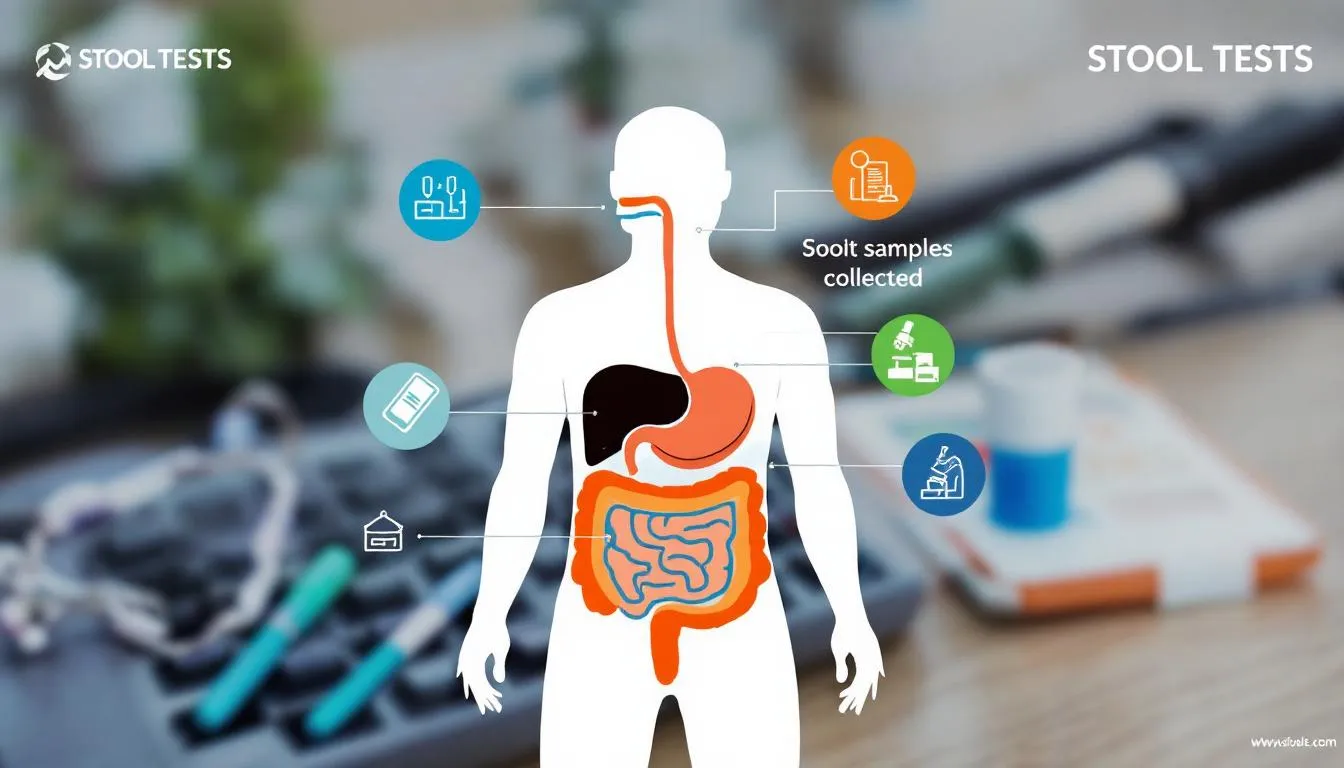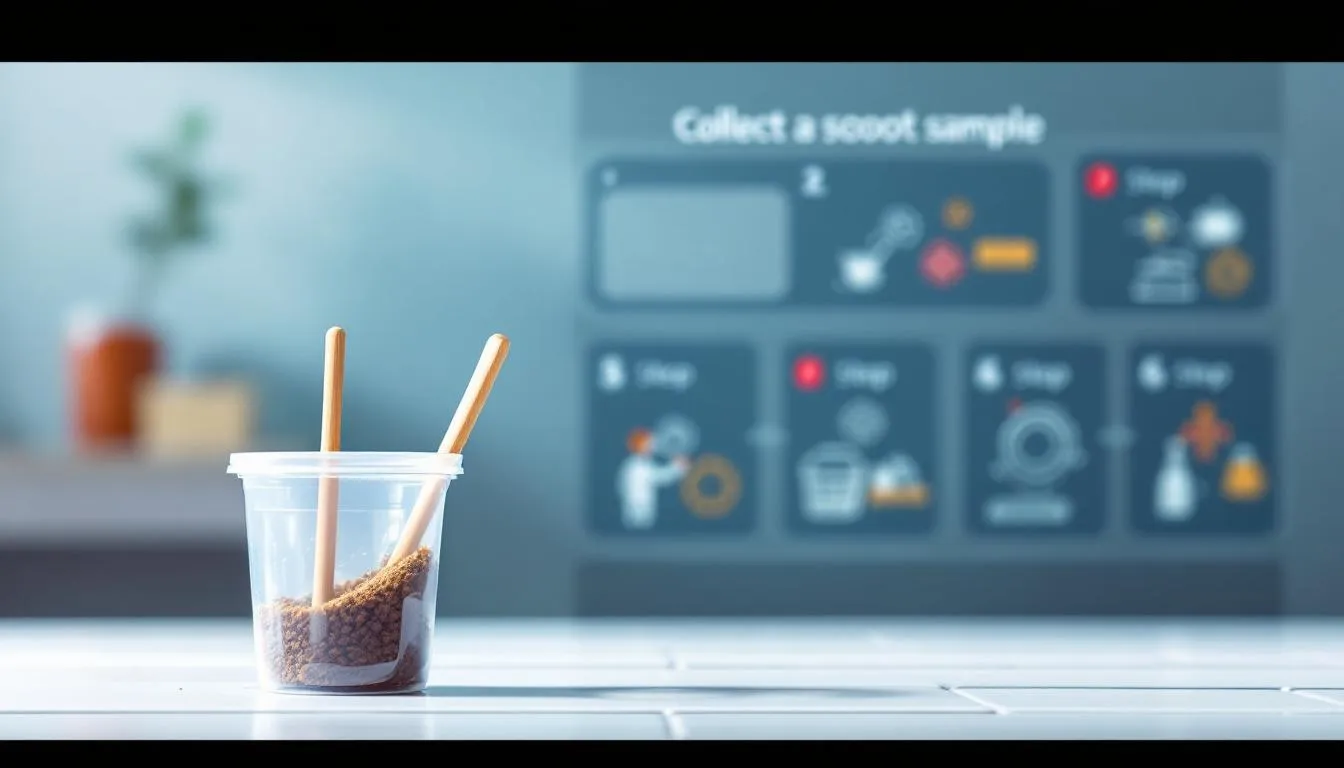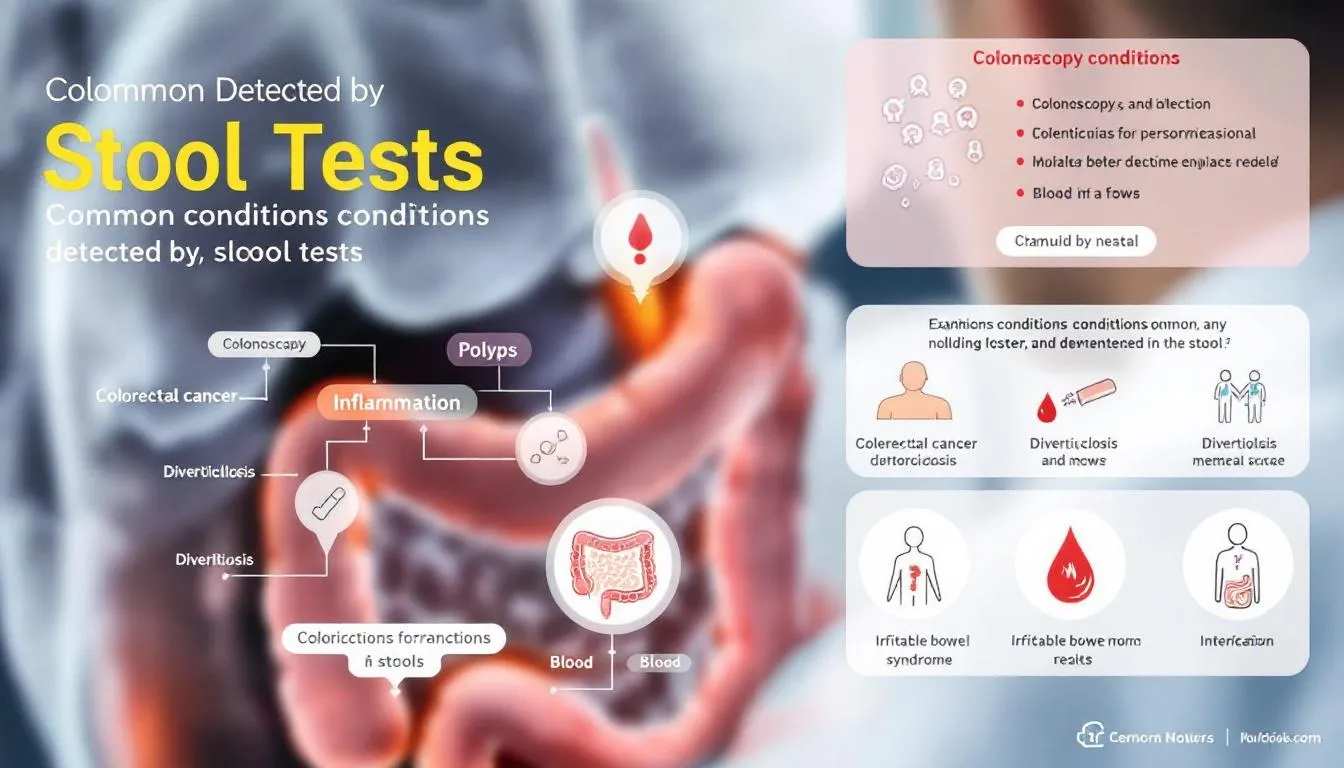A stool test can unveil crucial information about your digestive health. By analyzing a stool sample, doctors can detect infections, digestive disorders, and even signs of cancer. This guide breaks down the importance, procedure, and what results mean for you.
Key Takeaways
- Stool tests are essential diagnostic tools for assessing digestive health, detecting conditions like infections, inflammation, and cancer through stool sample analysis.
- Common types of stool tests include the fecal immunochemical test (FIT) for cancer screening, stool microscopy and culture for infections, and tests for specific pathogens like Clostridium difficile.
- Regular stool testing plays a critical role in early detection of serious health issues, allowing for proactive treatment and better health outcomes.
What is a Stool Test?

A stool test is a diagnostic tool used to assess health issues within the digestive tract. Analyzing a stool sample allows labs to detect conditions ranging from infections and inflammation to cancerous growths. Each stool test is tailored to the specific health concern at hand, employing different laboratory methods such as smearing the sample on a card, examining it under a microscope, or even amplifying its DNA.
One common type of stool test is the bowel cancer screening test, which checks for invisible traces of blood in the stool, potentially indicating cancer or pre-cancerous growths. These tests are crucial as they offer a non-invasive way to catch serious health issues early, allowing for timely and effective treatment.
Reasons for Needing a Stool Test

Stool tests are often recommended when certain symptoms arise. Persistent diarrhoea, vomiting, or blood in the stool can prompt a doctor to suggest this test. Recent overseas travel followed by symptoms of gastroenteritis warrants stool testing to identify the cause.
In settings like schools or aged care facilities, stool tests play a critical role in identifying infectious agents during outbreaks. Detecting gastrointestinal conditions early through stool testing is key to effective treatment and preventing the escalation of health issues.
Types of Stool Tests
There are several types of stool tests, each designed to detect different health conditions. For instance:
- The fecal immunochemical test (FIT) is used for bowel cancer screening.
- Stool microscopy and culture are employed to identify infections.
- Tests can detect specific bacteria like Helicobacter pylori, which is linked to stomach ulcers.
Each test serves a unique purpose in diagnosing and managing health issues.
Fecal Immunochemical Test (FIT)
The fecal immunochemical test (FIT), also known as the immunochemical fecal occult blood test (iFOBT), is a powerful tool in bowel cancer screening. This test looks for hidden traces of blood in the stool, which could be an early indicator of cancer. The beauty of FIT lies in its ability to detect blood that isn’t visible to the naked eye, thereby catching potential issues before symptoms develop.
By collecting a stool sample using a test kit provided by healthcare providers, individuals can complete the test in the comfort of their own home. The results can then inform whether further testing or immediate treatment is necessary, making FIT a crucial component of preventive healthcare.
Stool Microscopy and Culture
Stool microscopy and culture are essential techniques for diagnosing gastrointestinal infections. Under the microscope, lab technicians can identify various elements in the stool that indicate the presence of pathogens. Culture methods involve growing germs from the stool specimen to detect infectious agents like bacteria and parasites.
They are particularly useful for identifying disease-causing pathogens, including bacteria, parasites, and other pathogens. Special laboratory techniques are also used to detect certain pathogens like Clostridium difficile.
Through these detailed analyses, stool microscopy and culture provide valuable insights into the cause of gastrointestinal symptoms.
Clostridium difficile Test
The Clostridium difficile test specifically targets a bacterium known for causing severe diarrhea, often following antibiotic use. Symptoms of a C. difficile infection typically start after a course of antibiotics, making it a common concern in both healthcare and community settings.
Risk factors for C. difficile include advanced age, recent hospitalization, and recent antibiotic use. Detecting this bacterium early through a stool test can prevent complications and guide effective treatment strategies.
How to Collect a Stool Sample

Collecting a stool sample might seem daunting, but with the right guidance, it’s a straightforward process that you can do at home. A test kit provided by your healthcare provider enables you to collect the required sample at home.
Following the instructions in the kit ensures the sample is suitable for testing.
Using a Test Kit
A test kit typically includes all the necessary items for collecting a stool sample, such as a sterile container and detailed instructions. Some laboratories provide special containers designed to keep the sample sterile, ensuring it’s suitable for accurate testing.
After collecting the sample, it should be stored at a temperature between 2°C and 8°C, preferably in a refrigerator, if it cannot be delivered to the lab immediately. This helps preserve the sample’s integrity until it can be tested.
Avoiding Contamination
To obtain accurate test results, it is essential to avoid contamination. Make sure no urine or water contaminates the stool sample during collection. Using gloves can significantly reduce the risk of contaminating the sample and yourself. Additionally, it is important to wash your hands thoroughly after handling the stool sample.
Thoroughly washing your hands after collecting the sample prevents the spread of any infectious diseases present in the stool. Taking these precautions ensures the sample remains uncontaminated and suitable for accurate testing.
Submitting Your Sample
Once you’ve collected your stool sample, follow these guidelines:
- Deliver it to the laboratory as soon as possible.
- If the sample is received more than two hours after collection, it may be rejected.
- To prevent rejection, store the sample in a refrigerator until it can be delivered.
Most test kits come with a request form that needs to be filled out and submitted along with the sample. Ensure all details are correctly filled out, including the date and time of collection, to avoid any delays in processing your test results.
Understanding Your Test Results

Interpreting your test results is crucial for understanding your health status. A positive test result typically indicates a health issue that requires further evaluation. If your results are positive, consult with your doctor to discuss potential treatments or additional tests.
Conversely, a negative result usually suggests no significant health concerns at the time, which is considered normal. However, all results should be interpreted in the context of your overall health and symptoms.
Positive Results
A positive test result can be alarming, but immediate action is necessary. A positive result may identify the specific pathogen present or indicate a cancerous growth. A referral to an oncologist for further assessment and treatment may be necessary.
Schedule an appointment with your doctor to talk about next steps and any additional testing required for your medication. Early intervention significantly impacts treatment outcomes.
Negative Results
A negative test result is generally good news, indicating no detectable issues within the digestive tract at the time of testing. However, if your symptoms persist, it’s advisable to consult your doctor for further evaluation.
Additional tests or investigations, as well as other tests, may be suggested by your doctor to uncover any issues not detected by the initial test. This thorough approach ensures that any potential health concerns are addressed promptly.
Common Conditions Detected by Stool Tests

Stool tests can detect a wide range of health conditions, including stools. They are particularly effective in identifying infections caused by bacteria, viruses, and parasites. For example, tests can diagnose inflammatory bowel disease like Crohn’s disease and ulcerative colitis by measuring inflammation levels in the intestines.
Stool tests also play a crucial role in bowel colon cancer screening, often using the immunochemical fecal occult blood test (iFOBT) to detect hidden blood in the stool, a potential marker for colorectal cancer. Regular testing can catch early signs of cancer, allowing for timely intervention and treatment.
Risks and Limitations of Stool Tests
While stool tests are highly beneficial, they do have some limitations. In most cases, false negatives can occur if cancer or polyps do not bleed, potentially leaving conditions undetected, including those related to bleeding and tiny amounts.
These limitations highlight the importance of follow-up testing to confirm or clarify results.
Advantages of Regular Stool Testing
Maintaining digestive health and detecting potential issues early is facilitated by regular stool testing. Routine tests can help prevent serious diseases by identifying health risks before symptoms appear. This proactive approach to health management can significantly reduce disease risks and improve overall well-being with healthy foods.
In Australia, the iFOBT is commonly mail to Australians aged over 50 for regular bowel cancer screening, making it easier for older adults to participate in preventive health measures.
Summary
Stool tests are a powerful diagnostic tool that can uncover a variety of health issues in the digestive tract. From detecting infections and inflammation to identifying early signs of cancer, these tests play a crucial role in maintaining overall health.
Regular stool testing encourages proactive health management and early intervention, which can significantly improve treatment outcomes. By understanding how to collect and submit a stool sample correctly, and interpreting the results with your healthcare provider, you can take control of your digestive health.
Frequently Asked Questions
What is the primary purpose of a stool test?
The primary purpose of a stool test is to identify health issues in the digestive tract, such as infections, inflammation, and cancer. It helps in early diagnosis and management of gastrointestinal problems.
How is a stool sample collected?
Collecting a stool sample is straightforward; it typically involves using a test kit with a sterile container and following the detailed instructions provided. This ensures accurate results for any necessary testing.
What should I do if my stool test result is positive?
If your stool test result is positive, it’s essential to consult your doctor for further evaluation and discuss potential treatments or additional testing. Prompt medical advice will help address any concerns effectively.
Can stool tests detect cancer?
Stool tests, such as the fecal immunochemical test (FIT), can detect hidden blood in the stool, potentially signaling the presence of cancer. Early detection through these tests is crucial for effective intervention.
Are there any risks or limitations to stool tests?
Stool tests can indeed have risks, such as potential false negatives, making it essential to conduct follow-up tests for accurate confirmation of results. Always consult a healthcare professional to address any concerns regarding testing accuracy.
